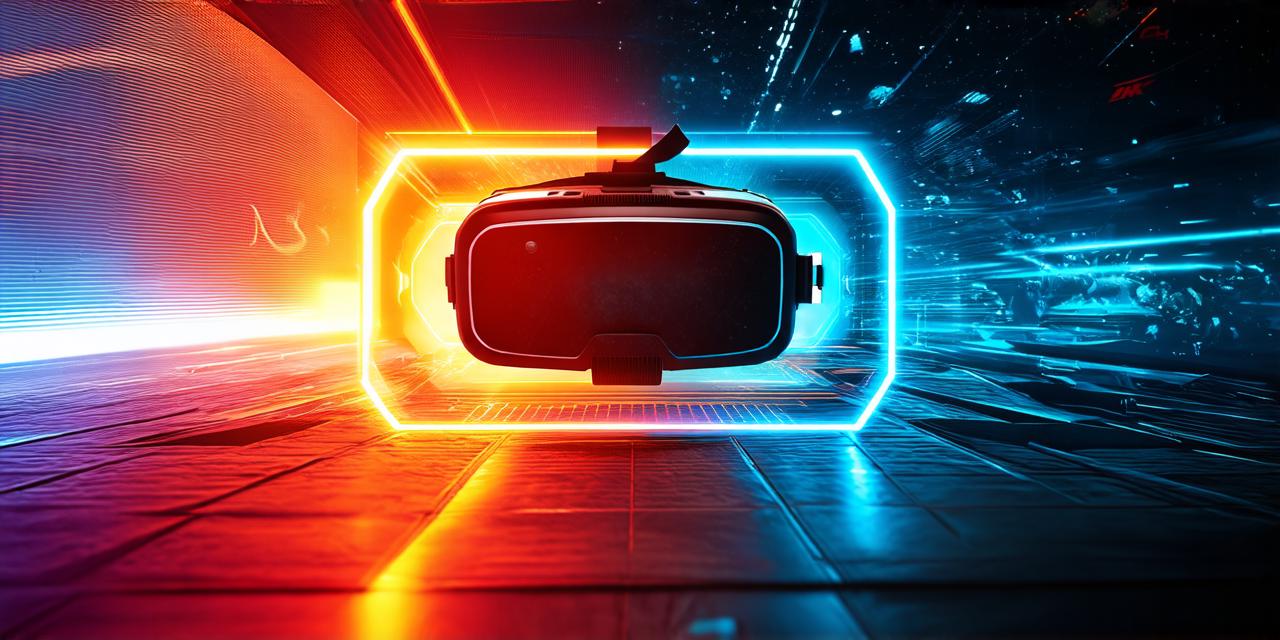<!DOCTYPE html>
1. Enhanced Engagement and Motivation
One of the main advantages of VR exercise is its ability to increase engagement and motivation. When users participate in virtual workouts, they are fully immersed in a simulated environment that can provide a sense of excitement and adventure. This increased engagement can lead to improved performance and adherence to an exercise routine.
Moreover, VR exercise can also provide instant feedback and rewards, which can help motivate users to continue working out. For example, a user who completes a challenging workout in a virtual world may receive points or badges that they can use to unlock new challenges or rewards.
1. Increased Accessibility
Another benefit of VR exercise is its accessibility. Traditional gym workouts can be expensive and time-consuming, requiring users to drive to the gym, find a parking spot, and wait in line for equipment. In contrast, VR exercise can be done from the comfort of one’s own home or office, with minimal equipment needed.
Furthermore, VR exercise can also be customized to suit individual needs and abilities. Users can choose workouts that match their fitness level and goals, and adjust the intensity and difficulty as needed. This means that even people with limited experience or physical limitations can participate in VR exercise and reap its benefits.
1. Improved Balance and Coordination
Virtual reality exercise can also help improve balance and coordination. Many VR workouts involve moving in a 360-degree environment, which can be challenging for users who are not used to it. However, as they become more comfortable with the virtual world, they may find that their balance and coordination improve.
In addition, some VR exercises specifically target balance and coordination. For example, users can practice yoga poses or dance moves in a virtual environment, which can help them develop better balance and coordination in real life.
1. Reduced Stress and Anxiety
Virtual reality exercise has also been shown to reduce stress and anxiety levels. When users participate in VR workouts, they are fully immersed in the experience, which can help distract them from their worries and concerns. In addition, some VR exercises involve meditation or deep breathing techniques, which can further reduce stress and promote relaxation.
Research has shown that regular physical activity can also reduce stress levels, and VR exercise may be particularly effective at this. One study found that participants who completed a 30-minute VR workout experienced a significant reduction in cortisol levels, a hormone associated with stress.
1. Enhanced Mental Stimulation
Virtual reality exercise can also provide mental stimulation and cognitive benefits. When users participate in virtual workouts, they are required to navigate a virtual environment and make decisions based on their surroundings. This can help improve problem-solving skills and enhance cognitive function.
In addition, some VR exercises involve games or puzzles that require users to use their minds creatively. For example, users may need to solve a riddle or complete a maze in order to progress through the workout. This type of mental stimulation can be particularly beneficial for people who are looking for ways to improve their cognitive abilities.
Case Studies and Personal Experiences
1. John, a fitness enthusiast who has been using VR exercise for several months, reports that it has helped him stay motivated and engaged with his workouts. He enjoys the variety of exercises available in virtual reality and finds that they keep him challenged and interested.
“I used to get bored with traditional gym workouts,” John says. “But with VR exercise, there’s always something new to try. Plus, I love the sense of immersion and adventure that comes with it.”
1. Sarah, a busy professional who has been using VR exercise at home, reports that it has helped her improve her balance and coordination. She enjoys practicing yoga poses in virtual reality and finds that it has made her feel more confident and centered.
“I never thought I’d be able to do yoga in my living room,” Sarah says. “But with VR exercise, it’s like having my own personal yoga studio right at home. And the feedback and rewards make it even more enjoyable.”
Research and Experiments
1. Can I participate in virtual reality exercise if I have mobility issues or physical limitations?
Yes, virtual reality exercise can be customized to suit individual needs and abilities. Users can choose workouts that match their fitness level and goals, and adjust the intensity and difficulty as needed.
1. What types of exercises are available in virtual reality?
Virtual reality exercise offers a wide range of activities, including yoga, meditation, HIIT, dance parties, and games that require cognitive skills.
1. Is virtual reality exercise more expensive than traditional gym workouts?
No, virtual reality exercise can be done from the comfort of one’s own home or office, with minimal equipment needed. This makes it an excellent option for people who are busy, have mobility issues, or live far from a gym.
1. Does virtual reality exercise provide immediate feedback and rewards?
Yes, virtual reality exercise can provide instant feedback and rewards, such as points or badges that users can use to unlock new challenges or rewards. This can help motivate users to continue working out.
1. Can virtual reality exercise be used for rehabilitation purposes?
Yes, virtual reality exercise has been shown to be effective at improving balance and coordination in older adults and reducing stress levels in people with chronic pain. It may also be useful for rehabilitation purposes in other situations, such as after surgery or injury.
